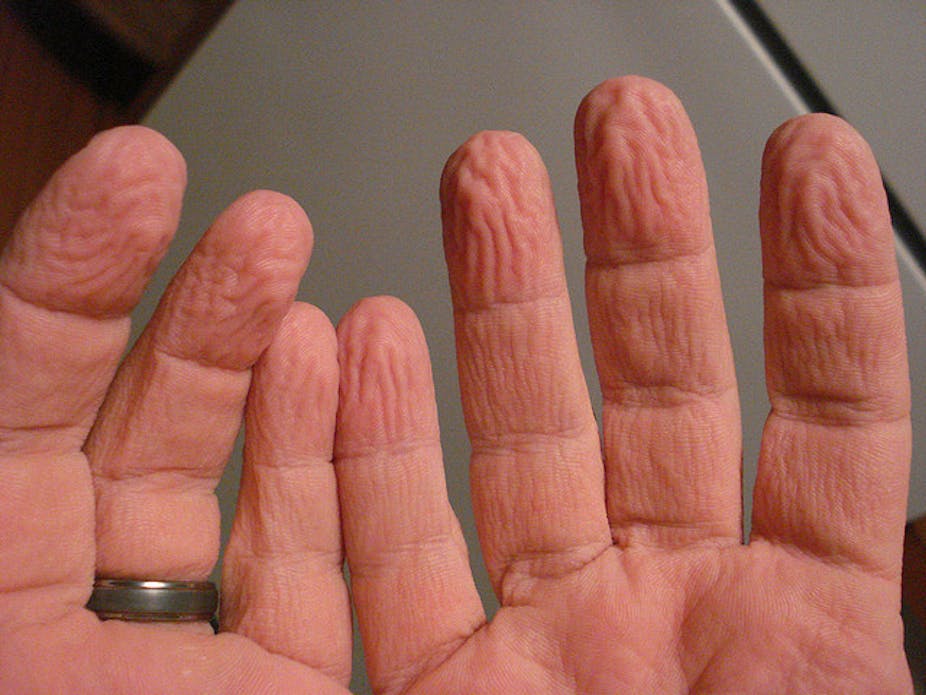Wrinkly fingers help improve handling of slippery objects in wet conditions, a new study has found, suggesting that evolution may be behind the prune finger phenomenon.
The study, conducted by scientists from the Centre for Behaviour and Evolution at Newcastle University in the UK, involved testing the speed with which subjects passed glass marbles from one container to another. Some of the objects were dry while others were submerged in water.
Participants first tried the test with fingers wrinkled from soaking in water and again after their hands had dried and returned to normal.
The study, published in the journal Biology Letters, found that while wrinkling had no effect on the handling of dry objects, wrinkled fingers transferred the submerged objects 12% faster than unwrinkled fingers.
“These findings support the hypothesis that water-induced finger wrinkles improve handling submerged objects and suggest that they may be an adaptation for handling objects in wet conditions,” the paper said.
One of the authors of the paper, Tom Smulders, Senior Lecturer at the Centre for Behaviour and Evolution at Newcastle University in the UK, said osmosis was involved in the process of finger wrinkling to let water into the fingers and trigger the process.
“But the fact is that the osmosis is only the first step, not the entire explanation. The neurally-controlled process that responds to the incursion of water by constricting blood vessels and causing the wrinkles is likely to be the result of natural selection,” he said.
Dr Maciej Henneberg, Professor of Anthropological and Comparative Anatomy at the University of Adelaide, said the study built on previous work suggesting that finger wrinkling may be a useful adaptation.
“It is fairly likely that if our ancestors spent a lot of time wading through water and extracting resources form shallow water, they have adapted to that. It’s quite a reasonable theory,” said Dr Henneberg, who was not involved in the UK study.
Human fingers are not wrinkly all the time because blood flows more easily through smooth finger tips and wrinkles afford no advantage in dry conditions, he said.
“So there’s a nice adaptation that when we are in a dry environment our fingers have smooth tips but when we are in wet situations, wrinkling helps,” he said.

